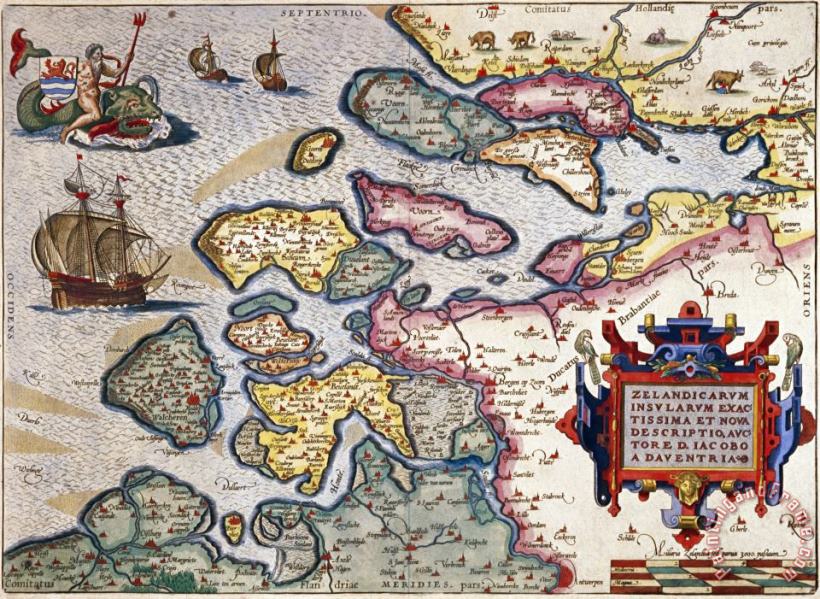

In 1577, engraver Philip Galle and poet-translator Pieter Heyns published the first pocket-sized edition of the Theatrum, the Epitome. The number of map sheets grew from 53 in 1570 to 167 in 1612 in the last edition. Editions had been published in Dutch, German, French, Spanish, English, and Italian.

Some 24 editions appeared during Ortelius's lifetime and another ten after his death in 1598. Nothing was like it until Mercator's atlas appeared twenty-five years later. He is known as the inventor of the atlas - a book bringing maps together in one format. The importance of the Theatrum Orbis Terrarum for geographical knowledge in the last quarter of the sixteenth century is difficult to overemphasize. Abraham Ortelius is a key figure in the history of human knowledge. The Parergon can be called a truly original work of Ortelius, who drew the maps based on his research. Later editions included Additamenta (additions), resulting in Ortelius' historical atlas, the Parergon, mostly bound together with the atlas. This first edition contained seventy maps on fifty-three sheets. It was one of the most expensive books ever published. He completed the atlas in 1569, and in May of 1570, the Theatrum was available for sale.
ABRAHAM ORTELIUS MAP FULL
In 1568 the production of individual maps for his atlas Theatrum Orbis Terrarum was already in full swing. In 1565 he published a map of Egypt and a map of the Holy Land, a large map of Asia followed. The inspiration for this map may well have been Gastaldi's large world map. From 1558 onwards, he is recorded as purchasing multiple copies of maps in order to colour them, but also began. In 1564 he published his first map, a large and ambitious world wall map. Following the death of their father, Abraham Ortelius (1527-1598) and his sisters became map illuminators or colourists and Ortelius also dabbled in buying and selling general antiques. In addition, he travelled a lot and visited Italy and France, made contacts everywhere with scholars and editors, and maintained an extensive correspondence with them. Luke as an "illuminator of maps." Besides colouring maps, Ortelius was a dealer in antiques, coins, maps, and books, with the book and map trade gradually becoming his primary occupation.īusiness went well because his means permitted him to start an extensive collection of medals, coins, antiques, and a library of many volumes. He learned Latin and studied Greek and mathematics.Ībraham and his sisters Anne and Elizabeth took up map colouring. K.The maker of the 'first atlas', the Theatrum Orbis Terrarum (1570), was born on 4 April 1527 into an old Antwerp family. The maps in the Parergon have to be evaluated as the most outstanding engravings depicting the wide-spread interest in classical geography in the 16th century For this work he did not, as in the 'Theatrum', copy other people's maps but drew the originals himself which were later engraved by Jan Wierix. Koeman mentioned about the Parergon of Ortelius: This atlas of ancient geography must be regarded as a personal work of Ortelius. The atlas consists of one engraved portrait of Ortelius by Philip Galle, a woodcut architectural title border, 30 engraved double-page maps and two engraved double-page views. The present edition of 1595 is usually bound with the 1595 Latin edition of the Theatrum Orbis Terrarum. During the following years, more map were completed and the Parergon became an atlas in its own right.

The Parergon maps began appearing as supplements within Ortelius main work the Theatrum Orbis Terrarum in 1579 with 3 maps. An atlas of the ancient world by Abraham Ortelius.


 0 kommentar(er)
0 kommentar(er)
